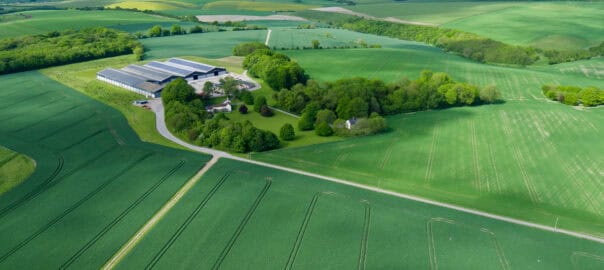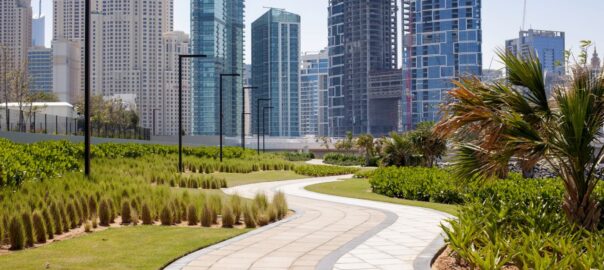How Do I Make Sure My Commercial Landscape Project Is Completed in Time?

If you’ve ever managed a commercial landscaping project that didn’t go according to plan, you already know how frustrating things like delays, overrun, and missed deadlines can be. Time is money, and in the world of commercial property development, every day your landscape isn’t finished is another day your project isn’t making the impression it should. Whether you’re installing palm trees around a hotel entrance, reworking the entire outdoor layout for a retail plaza, or transforming a bare plot into an eye-catching commercial space, getting your landscape project done on time isn’t about luck. It’s about strategy and having the right partner.
In the heart of Florida’s lush Lithia region, where outdoor spaces play a major role in property appeal, timeline management becomes even more important. So how do you make sure your commercial landscape project stays on schedule and wraps up when it’s supposed to? It all starts long before the first shovel hits the ground.
Start Strong with Clear Pre-Planning
Too many landscaping delays start before the project even begins. It’s not the weather or the materials holding things up. It’s poor planning. If the project doesn’t have a clear path from concept to implementation, you’re already behind schedule before anything gets installed. The pre-planning phase is where every detail gets hammered out. This is the time to clarify:
- Local zoning requirements and permitting timelines
- Irrigation and drainage concerns based on property layout
- Palm species, plant selections, and climate considerations
- Pedestrian and parking area interaction
- Long-term maintenance expectations and sustainability goals
One of the biggest mistakes commercial clients make is assuming the landscape design will take care of itself after the general construction is done. But without proper coordination between trades and a thoughtful approach to outdoor infrastructure, your landscape ends up being rushed or worse, delayed by red tape or poor soil prep. A landscape partner who offers pre-development services won’t just give you a design. They’ll walk through city and county regulations, environmental reviews, and help you make smart choices from day one. That saves time when it counts.
Make Project Management a Priority, Not an Afterthought
Once the plan is in place, execution becomes the name of the game. But commercial landscaping is more than planting trees and laying sod. It involves contractors, deliveries, schedules, subcontractors, and weather patterns. Without strong project management, it doesn’t take much for a timeline to go sideways. A team that knows how to manage landscaping projects in Florida’s fast-changing environment will:
- Break down the project into detailed phases with estimated durations
- Identify key dependencies like hardscaping that must come before planting
- Monitor weather trends to adjust installation windows for sod and trees
- Communicate regularly with stakeholders and report progress
- Stay flexible enough to make decisions without losing momentum
It’s not enough to show up and work. You need crews that are experienced in anticipating problems and resolving them quickly. The best commercial landscape teams use weekly milestone reviews and progress checkpoints to keep your project moving forward, even when things don’t go exactly to plan.
Choose a Crew That’s Been There, Done That
Landscaping a few backyards is one thing. Landscaping a commercial plaza, apartment complex, or industrial park is another. The scale is larger, the visibility is higher, and the stakes are bigger. If you want your project completed on time, you need a crew that knows what they’re doing. Look for signs that your landscaping partner has true commercial experience:
- A portfolio of completed commercial jobs with real results
- Skilled professionals who can work safely around construction zones
- Equipment to handle heavy lifting, grading, and palm tree placement
- Knowledge of hardscapes, irrigation, lighting, and specialty installations
- Familiarity with working as a contractor or subcontractor on larger teams
When a landscaping team has handled dozens of commercial jobs, they’re better equipped to navigate surprises without missing deadlines. They’re also more likely to hit the ground running with fewer stops and starts.
Don’t Cut Corners on Materials or Timing
In an effort to save money or move faster, some teams will try to rush things that shouldn’t be rushed. That’s a gamble. Planting palms during extreme heat or skipping crucial soil conditioning steps might save a few hours, but it often leads to rework which costs you more in both time and budget. Sourcing high-quality sod, mulch, and trees from trusted Florida nurseries ensures longevity and less chance of post-installation problems.
Quality materials are easier to install correctly the first time, and experienced crews will know the best timing for each planting or install step to avoid stress or damage. Cutting corners is one of the most common reasons projects fall behind later. Fixing mistakes always takes longer than doing it right from the start.
Communication Is the Lifeline of Your Timeline
Even the most detailed landscaping plan falls apart if no one’s talking. Regular, transparent communication keeps everyone aligned and aware of what’s happening next. It also prevents misunderstandings that lead to wasted time or duplicated effort. Great landscaping teams will stay in touch without being asked. That means:
- Quick responses to emails and phone calls
- Updates on order lead times for palms and plants
- Adjustments to scheduling based on site conditions
- Progress reports and photo documentation
When everyone’s on the same page, fewer decisions get delayed. You don’t have to chase updates, and your whole team has clarity on what’s already done and what’s coming next.
Build in Buffer Time, Just in Case
Let’s be real. In Florida, weather can and will interfere. Tropical downpours, late-season heat, and storm delays happen. You can’t control them, but you can plan around them. Buffer time isn’t wasted time. It’s your safety net. A skilled landscaping company will recommend schedule padding that takes regional factors into account, such as:
- Rainy season interruptions
- Delivery delays from out-of-area nurseries
- Site access restrictions if working alongside ongoing construction
- Holiday slowdowns
With buffer time worked in, even a few days of delays won’t derail your entire timeline. Instead of reacting with stress, you’re prepared.
Make Sure Your Landscaper Can Scale With You
Commercial landscaping projects vary in size, but they often grow quickly. A simple renovation may expand to include extra palm tree plantings, irrigation upgrades, lighting fixtures, and decorative hardscape. You need a landscaping team that won’t flinch if the scope increases.
Working with a company that can scale its crew, materials, and equipment to meet expanding project needs is crucial. If they’re already stretched too thin, your job won’t be a priority. But when you work with a flexible and responsive team, last-minute changes are manageable, not a crisis.
Look for a Local Advantage
When your landscaping partner knows the local environment, you don’t waste time on trial and error. Lithia, FL, and the surrounding areas have unique conditions that influence every aspect of landscaping:
- Soil composition affects how palm trees take root
- Local nurseries offer better acclimated plants
- Municipal permitting and code knowledge speeds up approvals
- Familiarity with native and drought-tolerant species avoids costly replacement
A local crew also gets there faster, knows when and where to source the best materials, and is more likely to have strong working relationships with other local trades. That translates into fewer delays and smoother workflows.
Commercial Landscaping That Stays on Track in Lithia, FL
Commercial landscaping is a lot more than just planting greenery. It’s a construction project, a design execution, and a public-facing investment all rolled into one. Timelines are tight, but that doesn’t mean you have to compromise quality or control. If you’re working on a commercial development in Lithia or anywhere in the Tampa Bay area and want your project completed on time, we’re ready to help.
Here at Oasis Palms & Landscaping, we bring years of hands-on experience, local expertise, and a commitment to results that last. Whether you’re installing resort-style palm features, creating a welcoming outdoor space for tenants, or refreshing your business frontage, our team is here to make sure your timeline stays intact without the stress.
Ready to Start Your Project? Let’s Talk Timelines
Waiting around for your landscape to catch up to the rest of your project is frustrating. Let’s change that. Contact Oasis Palms & Landscaping today and let’s talk about your commercial goals, your schedule, and how we can help deliver your landscape project right on time and exactly how you envisioned it. Explore our services or call us now to schedule a commercial landscaping estimate. Let’s get it done the right way, the first time.










